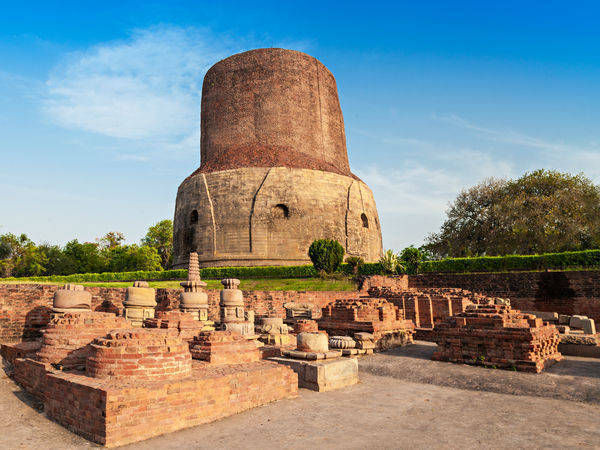Chinese, Indian archaeologists mull exploring birthplace of Buddhism
Updated: 2016-05-24 14:44
(Xinhua)
|
|||||||||
 |
|
Dhamek Stupa at Sarnath. [Photo/CRI/travel.india.com] |
The Institute of Archaeology under the Chinese Academy of Social Sciences will collaborate with Indian archaeologists at key sites in Sarnath, India. The project is expected to include excavations, cultural relics protection, and safety monitoring and control, Wang Wei, director of the institute, told Xinhua Monday.
Sarnath, in Northeast India, is where Buddha gave his first sermon and is considered one of the most important holy sites by Buddhists.
"We are very excited because our archaeologists will be finally able to look for, and may later touch and protect Indian relics that they have only seen in books," said Wang.
Sanjay Kumar Manjul, director of the Institute of Archaeology under the Archaeological Survey of India, voiced strong support for the project, which is expected to begin in November and last until 2020.
Another project, focusing on relics at Rakhigarhi, west of New Delhi, the site of one of the largest Indus Valley Civilization settlements, will also be launched.
"We are two neighbors with a long history of cultural, spiritual and economic ties, and I believe this project will strengthen our connection," he said.
The director explained that during the first millennium, many Chinese scholars and monks traveled to India, including Xuan Zang and Yi Jing, who attended Nalanda University in Bihar, north India.
"The detailed accounts of their journeys are an important resource for historians, archaeologists, Buddhologists and those interested in studying cross-cultural interactions in the pre-modern world. On the basis of these records, archaeologists have explored several Buddhist sites in India," he said.
Indian archaeologists have been excavating at Sarnath since the late 19th century, and a considerable number of temple relics and statues have been discovered. However, they have yet to be dated.
Another mystery Wang is interested in is the connection between Buddha statues from the Gupta Dynasty, discovered in Sarnath, and similar items made in China during the Beiqi Dynasty (550-577).
"The relationship between these relics may tell us something new about the spread of Buddhism in China," said Wang.
The project will feature some of the world's leading archeological technology, including three-dimensional remote sensing and three-dimensional imaging systems, as well as advanced indoor testing and analysis techniques, said Wang.
Related:
Related Stories
Tibetan art exhibition displays objects from Zagya Monastery 2016-04-28 14:51
Monk artist brings spirit, flowers to Macao 2016-04-28 14:32
Tian Long Ba Bu: Not just a Jin Yong novel 2016-04-25 15:41
Chinese Buddhism's birthplace remains a place of pilgrimage 2016-01-11 08:03
Shanghai gets a glimpse of rare treasures 2015-12-15 07:33
Today's Top News
Alibaba expands in Belgium amid protectionism
Eiffel Tower to become rental apartment for first time
Wreckage of crashed EgyptAir plane found at sea
Still learning
EgyptAir denies finding wreckage of missing flight
China urges US to halt close surveillance
Debris found in sea in search for missing MS804
LinkedIn matches refugees with jobs
Hot Topics
Lunar probe , China growth forecasts, Emission rules get tougher, China seen through 'colored lens', International board,
Editor's Picks

|

|

|

|

|

|







